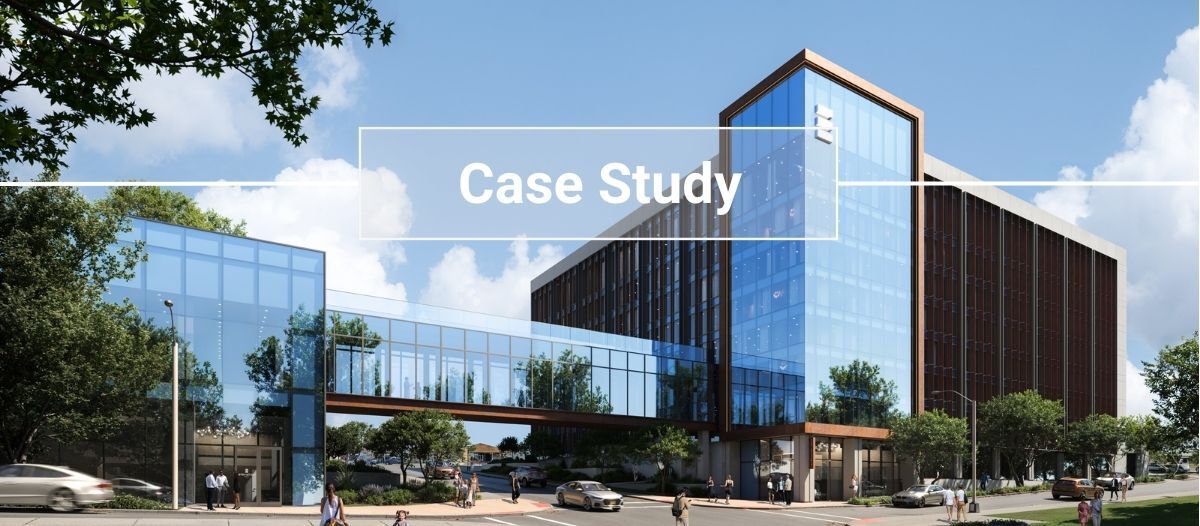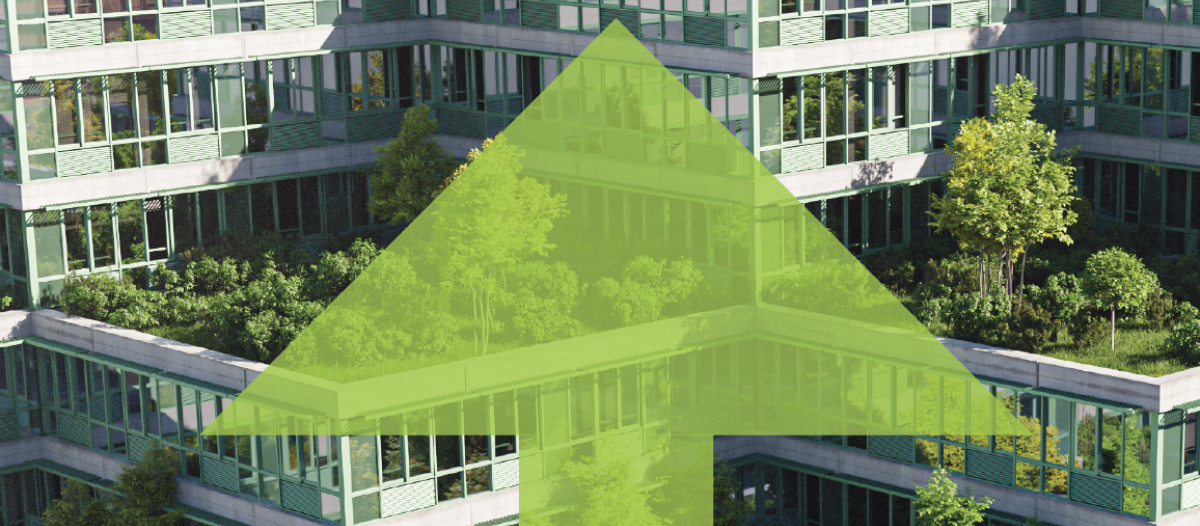Case Study: The Next Chapter
Unlocking the next phase of life for real estate projects

In today’s increasingly dynamic real estate landscape, underutilized and aging buildings no longer need to represent the end of a property’s life cycle. As cities evolve and prioritize sustainability, the real estate and facility management industries must move beyond the mindset of “tear down and start over.”
The three strategies of adaptive reuse, conversion and repositioning all offer practical, cost-effective and impactful strategies to align yesterday’s buildings with today’s needs and tomorrow’s possibilities. Each project demands its own approach, but the answers to finding the right path lie within the building and the community it supports.
Adaptive reuse, conversion and repositioning each represent a different strategic response but are often used interchangeably.
-
Adaptive Reuse involves repurposing an existing structure for a new function without major demolition. This approach respects the original character of the building while adapting it for modern uses — like converting a former school into an office complex or a warehouse into a mixed-use facility. Adaptive reuse not only preserves a structure’s historical integrity but also fosters a unique sense of place that is hard to replicate in new construction.
-
Conversion goes further by altering the building’s use through significant architectural and structural updates. These projects often require complete overhauls of internal systems and layouts — for example, turning an office building into residential units.
“This is where we ask buildings to become something entirely different,” said Tim Sliger, principal at U.S.-based architectural firm Hendrick. “It’s a challenge, but it can yield transformative outcomes for both the community and the client.”
-
Repositioning upgrades an existing building’s function or market appeal without altering its core use. It is an effective way to keep pace with changing tenant needs and expectations.
“This isn’t about change for the sake of it,” said Phil Burkett principal at U.S.-based Meyer Architects. “It’s about making sure buildings remain relevant and viable in competitive markets.”
Choose a path
Selecting the right approach among these three strategies is more important than ever as there is a growing appetite for solutions that maximize existing resources.
“Construction costs are rising, and land availability is dwindling,” said Sliger. “So, the old model of building new isn’t always financially or environmentally sustainable.”
Making a choice relies on a deep understanding of the property, the client’s long-term objectives and its market. Two sectors in which this shift is particularly evident are senior living and hospitality.
 Case Study
Case Study
Driven by the need to serve a demographic shift, a senior living project in Long Island, New York, USA, illustrates how to navigate such a decision. The adaptive reuse of a former hotel was ideal as the area did not have many new senior living projects to choose from. Its zoning was also already approved as residential and required no rezoning or land development. However, it did encounter regulatory hurdles early on. Initially classified as a Level 3 Alteration, the local municipality reclassified it as a “change of use,” triggering the need to meet more stringent International Building Code (IBC) standards.
“It just needed a more thoughtful approach to design and functionality to meet today’s expectations,” explained Burkett.
Originally constructed in the 1950s, the 145,000-sq.-ft. building already had many physical characteristics ideal for a senior community: wide hallways, large units and ample outdoor amenities like a walking path, pool and putting green. However, in addition to preserving the intact spaces, the former hotel required significant reprogramming work to reimagine underutilized spaces or areas that would not meet market expectations.
 Key adaptations included:
Key adaptations included:
-
reducing the number of units from 153 to 116 to allow for more spacious one- and two-bedroom layouts.
-
updating electrical infrastructure to accommodate new appliances.
-
completely overhauling interior finishes and amenities to align with accessibility and comfort requirements for seniors.
“Every element, from lighting to furniture, was reimagined to promote independence, dignity and social connection,” Burkett said.
The lobby went from dark and dated to a light-filled, welcoming space with focal elements and color contrasts. The bistro lounge, once rigid and inaccessible, was reborn as a flexible, community-friendly environment.
The project proved that adaptive reuse could deliver not just a refreshed building, but an entirely new value proposition. “We didn’t just redesign a building — we gave it new purpose and vitality,” Burkett said.
Another hotel project in Alabama went from a long-vacant apartment complex (an 80,000-sq.-ft., eight-story structure) into a world-class, 98-key boutique hotel and conference center.
Across the street, a former car dealership was earmarked for a 35,000-sq.-ft., newly constructed fitness center, laundry facility and support office space.
“This was a bold vision,” said Sliger. “The building had become a symbol of neglect. We saw an opportunity to restore dignity — not just structurally, but socially.”
The project faced multiple challenges:
-
post-pandemic changes in travel behavior required flexible guestroom layouts and multifunctional common spaces.
-
competition demanded a hospitality experience grounded in uniqueness and purpose.
-
aging infrastructure required utility and system upgrades, including plumbing and electrical rewiring.
.jpg?width=500&height=282&name=600%20BRIDGE%20RENDERING%20(002).jpg) Sliger noted that a higher contingency (10-15 percent) was built into the budget to account for unexpected issues like structural deficiencies and hazardous material remediation — problems often hidden in older buildings. Despite these challenges, the hotel’s design preserves historic elements while incorporating modern features like a rooftop pool, meditation garden and pedestrian bridge that symbolically connect past and future.
Sliger noted that a higher contingency (10-15 percent) was built into the budget to account for unexpected issues like structural deficiencies and hazardous material remediation — problems often hidden in older buildings. Despite these challenges, the hotel’s design preserves historic elements while incorporating modern features like a rooftop pool, meditation garden and pedestrian bridge that symbolically connect past and future.
“We wanted to create something more than a hotel,” said Sliger. “We wanted a place of reflection, a space where architecture supports social consciousness.”
Plan the route, pick your travel partners
Both Burkett and Sliger emphasized that no matter the strategy, successful projects always start with a comprehensive feasibility assessment.
These should cover:
-
Existing conditions: Look at structural integrity, system capability and aesthetic potential.
-
Location & demographics: Does the market support a new use?
-
Price & proforma: Can the project deliver a reasonable return?
-
Code & use compliance: What regulations will apply and how might they evolve?
-
Programming & operations: Will the repurposed building meet functional needs?
Early engagement with municipalities can save time and circumvent legal roadblocks. “Getting the local authorities on board early can save months of delays,” said Burkett.
Sliger also stressed the importance of stakeholder alignment. “These projects touch so many people — owners, tenants, regulators, neighbors,” he said. “You need all voices at the table from day one.”
Assembling the right team on the design side specifically was a key takeaway for both firms on these projects. Architects, engineers, code consultants and developers must work in concert from start to finish.
Other (takeaways) included:
-
Expect the unexpected: Allocate time and budget for surprises, especially with older structures.
-
Prioritize flexibility in design: Use modular systems and flexible layouts to accommodate future needs.
-
Balance innovation with preservation: Maintain the character of the building while integrating modern efficiencies.
Out of the woods
Once a project is complete and the ROI can be seen and felt, what should also be obvious is the significant social, cultural and environmental benefits that come with reutilizing existing infrastructure. By preserving architectural heritage, building owners and operators retain a strong community identity and historic character. It also promotes walkability, and with increased foot traffic comes stimulation of local economies, creating jobs and attracting investment. On the more obvious end: material waste is reduced, as well as the carbon footprint associated with demolition and new construction.
“These are not just building projects,” said Burkett. “They’re community revitalization projects.”

Jennifer Treter, managing principal at Hendrick, has held a senior leadership position for more than 20 years and is the driving force behind all operational initiatives. She earned her Bachelor of Interior Design from Auburn University and is affiliated with the National Council for Interior Design Qualification, CoreNet Global and Metro Atlanta Chamber and is a LEED Accredited Professional.
Read more on Sustainability and Real Estate or related topics Real Estate Management , Operational and Capital Budgeting and Building Life Cycle
Explore All FMJ Topics









